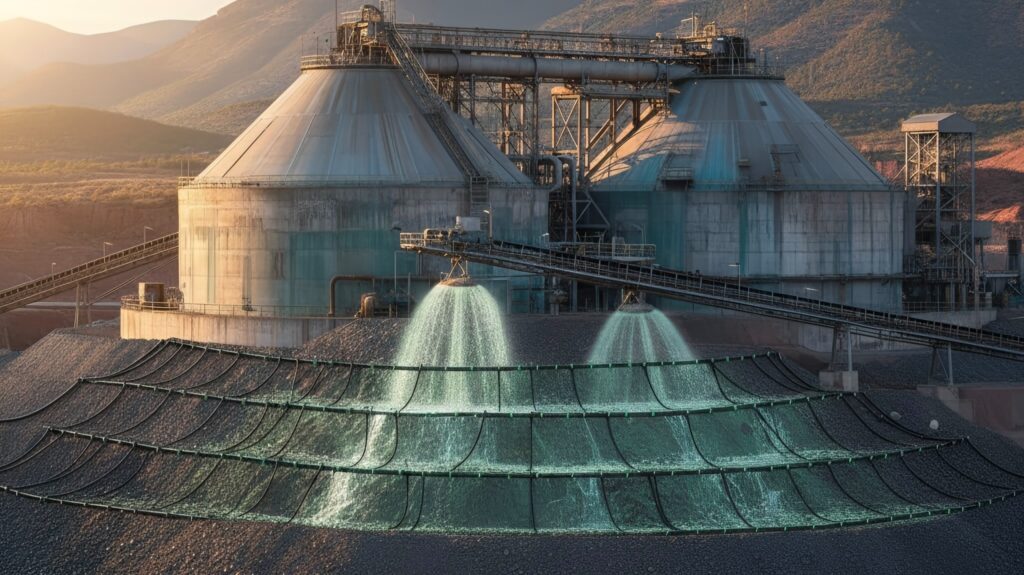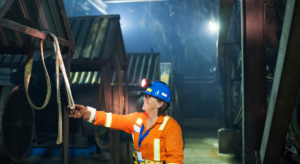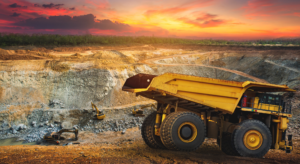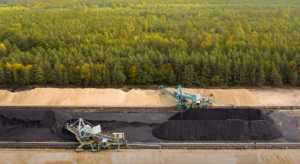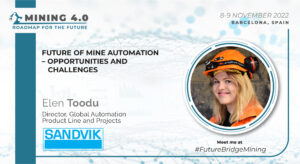If you walk into modern Spanish mines today, the scene might surprise you. Instead of just heavy machinery, you’ll find tiny/specially designed microbes & smart sensors quietly doing the hard work. These days, AI is watching for changes almost before people can react, and every drop of water or speck of silver is tracked down to the tiniest detail. Because of new bioleaching methods combining biology and data science, mining isn’t about choosing between making money or protecting the planet anymore – it’s about doing both at the same time.
What’s really interesting is how these mines have turned into places of real change. Thanks to support from EU research, new rules, and plenty of private innovation, Spain’s mines are less like digging sites and more like experimental labs. People here are proving that with the right mix of synthetic biology, tech, and a bit of vision, “green” mining that’s profitable and transparent isn’t a dream – it’s happening now.
Disruptive Microbial Engineering in Spanish Mines: A Global Benchmark
Spanish mines are changing the future of extraction by making biology a strong industrial tool. The global demand for clean/responsible production is on the rise, so next-gen bioleaching technologies in Spain are changing non-accessible ores into valuable reserves. Let’s learn more about it:
Synthetic Biology – Engineering Extremophiles for Selective Recovery
Modern Spanish mines are using synthetic biology. This is to reprogram extremophiles such as Acidithiobacillus ferrooxidans. This is for precise bioleaching of valuable metals. Scientists customize gene clusters through various techniques. It includes CRISPR-Cas & modular plasmid engineering. These increase the expression levels of iron/sulfur oxidation enzymes. In addition, these genetic enhancements accelerate Fe(III) & sulfate ion production. It is accelerating metal solubilization from complex sulfide ores. Enhanced cell surface peptides also improve selectivity. It helps to isolate cobalt and rare earth elements while minimizing contaminants.
Moreover, emerging pilot projects across Spain are applying synthetic multi-trophic consortia. These combine engineered bacteria for leaching with custom archaea for byproduct remediation. These microbial partnerships also cut waste and increase the rates of recovery. Advanced process controls feed real-time omics data into adaptive bioreactors. It adjusts microbial ratios as per ore type and leachate composition. Additionally, with the support of Horizon Europe programs, next-generation bioleaching technologies in Spain are now outperforming wild strains under acidic/high-metal/ variable salinity conditions.
Genomics-Driven Strain Optimization Versus Traditional Consortia
Spanish researchers are also going beyond mixed consortia models. This is with genomics-driven strain optimization. In one controlled pilot, isolates of Delftia lacustris from saline mine drainage were sequenced. It revealed genes responsible for silver/antimony transport. After the targeted mutagenesis enhanced these loci, the optimized strain achieved 85% silver & 72% antimony recovery in single-strain reactors. It maintained efficiency even when the ore quality was fluctuating.
By contrast, when it comes to traditional consortia built from site-enriched samples, it produced unpredictable results. It also had limited resource efficiency. Moreover, competition between microbial species led to premature depletion of nutrients & inconsistent selectivity. Furthermore, with genomics-defined strains, operators make use of digital PCR. It monitors the key gene expression in real-time. It adjusts the process conditions for maximum uptake. So, this precise approach, which is now standard across Spanish mines, shows why tailored microbial design is replacing legacy consortia methods when it comes to next-generation bioleaching technologies in Spain.
Cross-Functionality: Spanish Collaborations with European Research Networks
Spanish mining biotechnology groups are expanding their reach with powerful collaborations, that too, across Europe. Furthermore, partnerships with Germany’s Helmholtz Centre for Environmental Research & France’s CEA Genomics Institute are taking high-throughput screening of extremophiles from Spanish salt flats forward. These projects share annotated genomic data with secure EU platforms. As a result, it ensures cross-border validation and consistent benchmarks in performance.
One major Horizon Europe project, MASTERMINE, links Spanish labs in Salamanca & Seville with Swiss and Finnish teams. This is to develop AI-assisted metabolic mapping and rapid phenotyping tools. Moreover, Spain contributes unique microbial strains and field-scale bioreactor data. This supports real-time metabolomic and proteomic exchanges. Additionally, joint patent filings on engineered Nocardiopsis maritima strains for better rare earth mobilization highlight this progress. So, with these collaborations, Spanish mines are gaining access to validated microbial designs and regulatory alignment. This speeds up the next-generation bioleaching technologies in Spain across the European innovation landscape.
Digital Transformation in Sustainable Mineral Extraction: Data at the Core
Is the age of manual mining over? Well, Spanish mines now function as intelligent systems. Automation, analytics, & AI guide every process in real time. Moreover, data-driven operations make safety better, predict performance, & also reduce waste. This allows Spain to lead the digital transformation in sustainable mineral extraction. Let’s look at it in depth:
Biofilm Engineering for Superior Mineral Interface Performance
Spanish research institutions are dominating biofilm engineering. It helps to improve contact between microbes and mineral surfaces. At the Universidad de Salamanca, scientists have modified Delftia lacustris and marine actinomycetes. This is to overproduce extracellular polymers such as alginate & polyglucose. Consequently, this enhances microbial adhesion to ore surfaces at saline/acidic conditions. Furthermore, high-resolution imaging techniques, including atomic force microscopy, verify that engineered biofilms persist longer on surface attachment. So, this increases redox cycling and speeds up bioleaching rates.
Making use of microfluidic platforms, researchers pattern biofilms with spatially defined metabolic activity. As a result, this allows targeted dissolution of silver, antimony, & rare earths. This is while reducing the side reactions. Moreover, quantitative analysis shows silver extraction efficiency going from 48% to 82% in pilot trials! That too with fewer unwanted byproducts. These advances also make next-generation bioleaching technologies in Spain more reproducible and efficient. It marks a clear departure when we see older/less controlled systems.
IoT Integration for Real-Time Mineral and Biomarker Analytics
Across multiple Spanish mines, IoT sensor networks are being embedded into bioleaching reactors. It enables real-time monitoring. At the Minas de Aguas Teñidas site, wireless sensors detect elemental concentrations with the use of:
- Compact X-ray fluorescence
- & Raman spectroscopy modules.
In parallel, fluorescent reporter microbes were designed along with Madrid’s CNB-CSIC signal metabolic changes. It also signals biosynthetic activity within the leaching environment.
This live data flows to edge computing systems. This is where AI models predict potential process slowdowns and also automatically adjust the nutrient dosing & aeration. The result stands to be:
- Higher extraction consistency,
- Fewer disruptions,
- And improved yield stability.
On average, recovery rates go up by 31%, while the downtime of the process decreases by a high margin. With the combination of sensor analytics & biological insight, Spain has positioned itself as a leader in smart process control.
Adaptive Management for Large-Scale Bioleaching Operations
Large-scale Spanish mines are now working under real-time adaptive management systems. They are powered by digital twins. Furthermore, these platforms model entire bioreactors. It processes live data from:
- Dissolved gas,
- Metabolite,
- And optical density sensors.
Furthermore, control algorithms developed with the Barcelona Supercomputing Center adjust
- Temperature,
- Aeration,
- And pH on the fly to maintain ideal microbial activity zones.
With the use of Bayesian models trained on historical omics data, operators can predict stress indicators before they affect any output. Moreover, when molecular signals show microbial strain fatigue/nutrient imbalance, automated actuators adjust conditions immediately. This stabilizes performance. This precision has also cut recovery variability by 41% across pilot trials. The adaptive framework further enables next-generation bioleaching technologies in Spain. This is to scale smoothly, making sure of steady performance even with varying ore inputs & environmental conditions.
Navigating Economic Volatility: Risk, Reward, and Financing Green Extraction
Spanish mines are mastering volatility with the help of smarter financial tools and predictive risk models. By treating risk as a trigger for innovation rather than a setback, Spain is turning economic uncertainty into a force that speeds up next-generation bioleaching technologies in Spain. It also propels sustainable industrial development, that too, across Europe. So, let’s examine this:
Quantitative Risk Assessment: Market Viability of Bioleached Metals
Spanish mines are using quantitative risk assessment models. This is to study how market variability impacts the commercial viability of bioleached metals. At the Cobre Las Cruces site, Monte Carlo simulations measure changes in:
- Purity,
- Yield,
- And the price of metals like silver, antimony, and rare earths.
Each of the simulation factors in the process downtime, yield uncertainty, & policy shifts. This creates probabilistic output models that predict financial stability.
Furthermore, operators connect real-time data from in-situ sensors with global trading dashboards. It tracks commodity trends and makes dynamic choices in operations. Moreover, if silver prices spike, extraction focus can shift instantly toward the zones of higher-margin recovery. Moreover, Spanish institutes are making hybrid indices. These merge environmental KPIs, such as carbon output per unit metal, with cost-based metrics. This balance also makes sure that bioleaching operations stay both profitable & compliant when it comes to EU circular economy goals. It sets new financial standards for digital transformation in the sustainable extraction of minerals.
Blending Bioleaching with Conventional Flowsheets in Spanish Projects
At the major Spanish mines, engineers are combining bioleaching with top extraction methods. It includes flotation & hydrometallurgy to recover metals from complex ores efficiently. At Río Tinto and Matagorda, the first stage utilizes flotation to concentrate ores. This is followed by targeted bioleaching using optimized Delftia & Nocardiopsis strains. As a result, this approach unlocks metals like antimony & molybdenum. These usually remain trapped in tailings. So, it increases the value recovered per ton of ore.
Moreover, advanced mineralogical mapping tools allocate ore fractions precisely. Copper-rich concentrates go through traditional processes while microbial reactors handle the lower-grade fractions. Spanish engineers also make use of Kinetic modeling. It monitors pH, oxidant flow, & microbial activity for real-time process tuning. Additionally, this combination has boosted total metal recovery by close to 28%. It has also cut cyanide & sulfuric acid use by more than 30%. The result stands to be a cleaner/more profitable workflow that gives the next-generation bioleaching technologies in Spain a definition.
Securing EU and Private Equity for Large-Scale Demonstrators
Spanish mines are attracting stunning financial support from the EU & private investors alike for massive bioleaching demonstration schemes. In addition, RAWMINA (a Horizon Europe project) brings together 19 partners in 10 countries. This is to test the microbial recovery of cobalt/tungsten/ gold/ silver at Cobre Las Cruces. This pilot is crucial for scaling next-generation bioleaching technologies in Spain. It aids the EU’s mission for critical raw material independence.
Moreover, funding covers both infrastructure and R&D. This is with Spanish & French labs running synchronized trials to compare extraction yields. Investors are also attracted by the potential of low-carbon technology backed by the mandates of EU sustainability. Additionally, performance metrics are consistently audited. It includes:
- Yield,
- Cost efficiency,
- And the environmental footprint.
Successful results open the door to a much broader market entry. This makes Spanish mines a centerpiece in Europe’s transition to sustainable resource extraction & smarter/ green financing frameworks.
Advanced Environmental Compliance and Stakeholder Engagement Models
Mines across Spain are changing transparency with live data dashboards & predictive modeling. As Spanish mines include compliance in every part of the process, technology stands to be the bridge between ecological accountability & operational performance in digital transformation when it comes to sustainable mineral extraction. So, let’s find out about this aspect in detail ahead:
Predictive Environmental Impact Modeling Using Big Data
Across Andalusian pilot sites, Spanish mines are integrating predictive environmental modeling systems in their bioleaching operations. They collect geochemical, microbial, & hydrological data with the help of IoT sensors, drones, & sequencing tools. Furthermore, ML models like ANN and SVM detect early signs of acid drainage/ heavy metal shifts. So, these insights make way for proactive adjustments in the process before environmental issues come up.
Models also include hydrogeology and rainfall data. It forecasts contamination risks in real-time. Spanish operators lean on the dashboards that display ecosystem response scenarios at the batch level. Moreover, the result is predictive control instead of reactive management. These platforms make way for next-generation bioleaching technologies in Spain to meet the highest EU environmental standards. This is while making the process continuity better. With the combination of data and compliance, Spanish mines are displaying that sustainability and profitability can go hand in hand.
Bioleaching and Water Strategy: Managing Scarcity and Contaminant Fate
Water scarcity is a huge challenge that is standing in front of Spanish mines. This is especially the case in dry regions like Axarquia & Linares. Furthermore, bioleaching plants are now made around closed-circuit water systems. This is where process water goes through reuse for multiple cycles. Moreover, sensors constantly measure toxic load. This ensures safe arsenic and boron levels before reuse. In Linares, close to 60% of treated wastewater goes through reuse in ceramic production. It physically traps contaminants and reduces discharge volumes.
Additionally, Spain’s updated regulations need desalination and oxidation treatment before any water release. Operators also adapt to seasonal changes in rainfall by adjusting microbial and chemical parameters. This strategy cuts groundwater pollution & supports long-term reclamation, paired with electrokinetic flushing/biochar remediation. With these layered techniques, Spanish mines combine digital transformation in sustainable mineral extraction with water resilience. It proves that ecological stewardship makes operational stability stronger.
Next-Gen ESG Reporting: Blockchain for Traceability and Public Perception
Spanish mines are changing how environmental and social compliance goes through verification using blockchain-based ESG systems. Furthermore, working with platforms such as Circulor & Minespider, companies attach digital tokens to each shipment. This logs everything from the origin of the ore to the carbon footprint. Each process step – extraction, energy use, and water recycling – is tracked/verified in real-time with smart contracts.
Moreover, RFID and QR tagging allow immutable lifecycle data to follow each concentrate batch across the supply chains. So, this combination gives investors/regulators complete visibility and helps companies fall in line with strict EU traceability norms. Additionally, public dashboards display sustainability scores that update dynamically. It turns transparency into a business advantage. By 2026, next-generation bioleaching technologies in Spain are expected to be fully traceable. This proves that ethical extraction is not just compliance; it is a competitive leverage when it comes to Spanish mines in the global market.
To Sum Up
Some of the biggest changes in the mining world are happening right now in Spain, and honestly, it’s not what most people expect. Instead of the usual drills and dust, these places are rolling out smart tech everywhere. AI is processing data, little sensors are monitoring minerals, and even blockchain is ensuring rules are being followed, not merely vowed. What’s interesting is the way biology is now in collaboration with digital instruments. Engineers discuss microbes & ML within the same breath, and no one raises an eyebrow anymore.
Spain’s taking the lead, & the whole industry is paying attention. The drive for transparency and flexible control means performance and sustainability are finally part of the same conversation, not at odds. If you want to see what the next wave of “green” mining actually looks like, all the action’s heading to Barcelona, Spain, for the 8th Mining 4.0 Summit: Roadmap For The Future this 6th-7th November, 2025. That’s where new ideas make the leap from test runs to actual business, and people will find out what real innovation in mining feels like, live and up close.

